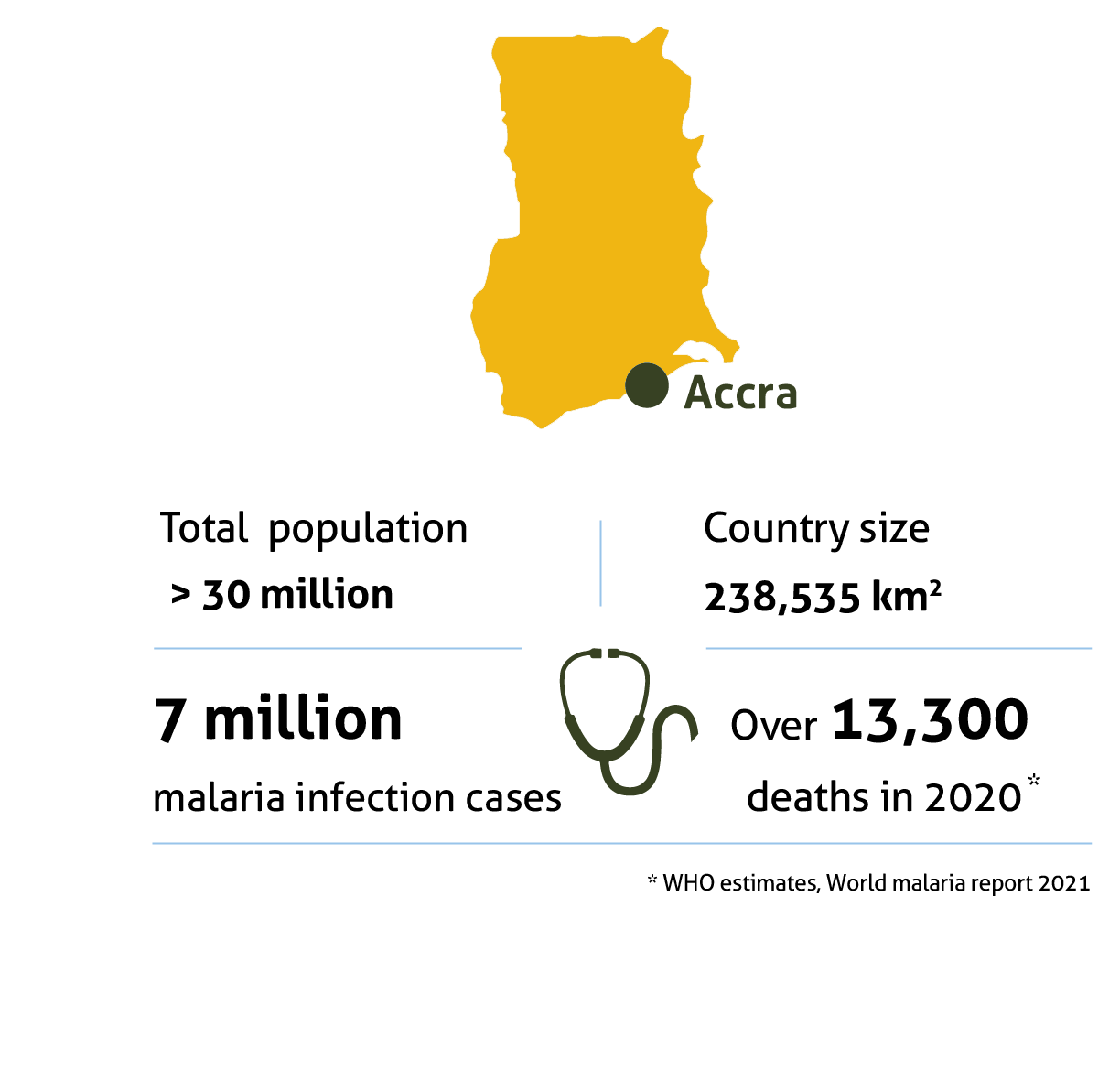Larviciding
Larviciding
Malaria is a life-threatening disease that is transmitted through the bite of an infected female Anopheles mosquito. The life cycle of the mosquito has four stages: egg, larva, pupa and adult. The first 3 stages are aquatic (water bodies) and the adult stage is terrestrial. Larval source Management (LSM) is the management of aquatic habitats that are potential larval habitats for mosquitoes, LSM aims to prevent the completion of development of the immature stages (egg, larva and pupa). Thus, Larval source management refers to the targeted management of mosquito breeding sites, with the objective of reducing the number of mosquito larvae and pupae.


The core intervention (IRS)
The core intervention (IRS) implemented against the malaria vector has been largely effective in reducing the burden of the disease in all operational districts. AngloGold Ashanti (Ghana) Malaria Control Limited (AGAMal) has been implementing larviciding intermittently complementing the primary intervention Indoor Residual Spraying. It is recommended as a complementary intervention to augment the core interventions such as indoor residual spraying (IRS) and long-lasting insecticide nets (LLINs).
AGAMal’s complementary larviciding is carried out with Bacillus thurengiensis israelensis (Bti).
Geotagging Breeding Sites
Potential breeding sites are geotagged and characterized using the GhanaPost GPS mobile application and mapped using Google Earth®. This contributes to a more precise quantification of personnel, larvicide and increased efficiency in tracing sites for treatment and re-treatment. Entomological monitoring is done to assess the juvenile and adult vector densities over a period of time.
- Habitat modification: a permanent alteration to the environment, e.g. land reclamation;
- Habitat manipulation: A recurrent activity, e.g. flushing of streams;
- Biological control: the introduction of natural predators into water bodies
- Larviciding: the regular application of biological or chemical insecticides to water bodies

